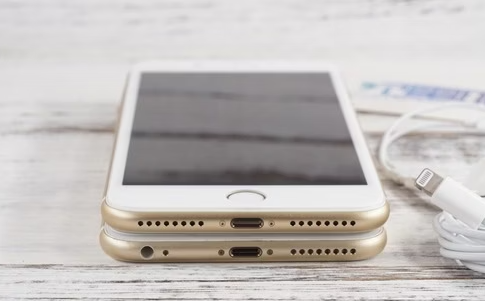1、What is USB-C to lightning?
USB-C to Lightning is a set of data cable specifications defined by Apple. One end is a USB-C port and the other end is Apple's unique lightning connector, hence the name. This standard covers iPhone and iPad charging and data transmission, and is also an important product in Apple's MFi accessory certification. This data cable was first launched with the iPad Pro, and when paired with a USB PD charger, the latest Apple devices can enjoy a fast charging experience.

2、What does C94 look like?
Compared with the multiple component combinations of C48 and E75, the C94 chip design is more integrated.

3、Which Apple devices support fast charging?
Currently, Apple’s Lightning peripherals that support USB PD fast charging are as follows:
|
iPhone model |
Fast charging specifications |
|
iPhone 8 / iPhone 8 Plus |
18W PD Fast charging |
|
iPhone X / XR / XS / XS Max |
18W PD Fast charging |
|
iPhone 11 / 11 Pro /11 Pro Max |
18W PD Fast charging |
|
iPhone 12 / 12 mini / 12 Pro / 12 Pro Max |
18W PD Fast charging |
|
iPhone 13 / 13 mini / 13 Pro / 13 Pro Max |
20W PD Fast charging |
|
iPhone SE3 |
20W PD Fast charging |
|
iPhone 14 / 14 Plus / 14 Pro / 14 Pro Max |
20W PD Fast charging |
4、Differences Between C94, C91, C89, C52, and C48
The most noticeable difference between PD fast charging cables and standard Lightning cables is that the Lightning connector is silver-white instead of gold. This silver-white connector is known as the C94 connector. So, what is the C94 connector?
The C94 connector is one of the models of Apple’s PD fast charging Lightning connectors. In addition to the C94, Apple also has C91, C89, C52, and C48 connectors, each serving different purposes.
Among them, the C94, C91, and C52 (which has been discontinued) connectors all support Apple’s fast charging. The C94 and C91 connectors have the same shape and PCB design; the difference is that C94 is open to MFi factories, while C91 is used exclusively by Apple.
|
Connector Model |
Fast Charging Support |
Authorization |
Usage |
Connector Color |
|
C94 |
Yes |
Open License |
USB C to Lighting |
Silver-White |
|
C91 |
Yes |
Apple Only |
USB C to Lighting |
Silver-White |
|
C89 |
No |
Open License |
USB A to Lighting |
Gold |
|
C52 |
Yes |
Discontinued |
||
|
C48 |
No |
Discontinued |
||
Due to the rhodium plating process, both the C94 and C91 connectors are silver-white. Furthermore, they use an unbreakable SHA256 encryption algorithm similar to that used in Bitcoin. On the other hand, C89 and C48 (which have been discontinued) are designed for USB-A to Lightning data cables, with gold contact points.
5、Why is the lightning plug of Apple C94 data cable silver?
After researching reviews of the released C94 cables and comparing them to earlier reviews of the C91 and C52 cables, it’s evident that the Lightning connectors of both C94 and C91 are silver. Many users have noted that Apple seems to have switched from gold plating to silver, suggesting it might be a cost-cutting measure.

However, the truth is that the plating process for the C94 and C91 connectors has been upgraded from gold to rhodium. This gives the gold contacts a silver appearance.
The direct benefit of this change is that the rhodium plating provides better corrosion resistance against sweat and other liquids, making it more durable. Interestingly, the cost of rhodium plating is actually more expensive than gold plating, meaning this “silver” finish is more costly than the previous “gold” finish.
In contrast, the C52 connector still uses gold plating, which has been a common industry standard for years. However, unlike the internal contacts of Micro USB or USB-C cables, the Lightning interface is more exposed and susceptible to contact with sweat and liquids. When sweat contaminates the Lightning contacts and a phone is charged, it can lead to damage—something that often results in the gold contacts becoming tarnished. Apple recognized this flaw and decided to invest significantly in improving the plating process.